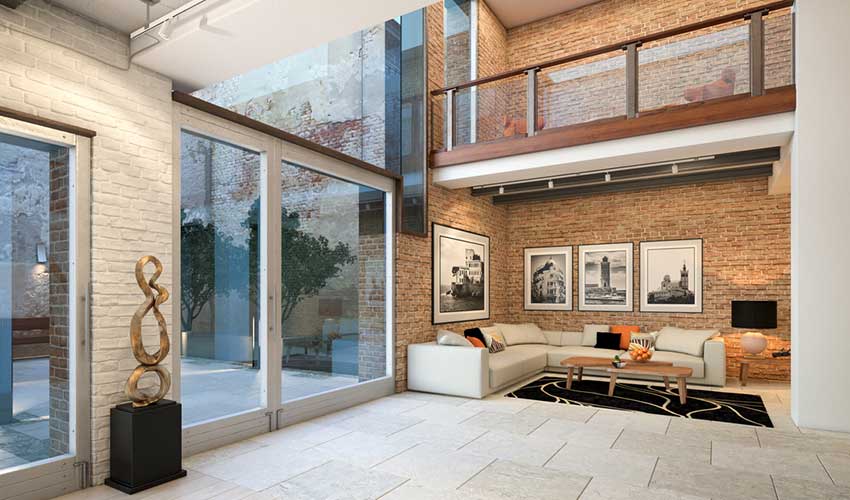Whether you keep your fine art in your home or a gallery, in storage or on display, it is wise to take steps to ensure that it is properly preserved for generations to come. Below are a few tips to consider, depending on the type of material or media your artwork includes:
Panel paintings can be particularly fragile as wood can crack or warp in reaction to temperature or humidity fluctuations.
Oil on canvas paintings are also susceptible to environmental damage through cracking and cleavages of the different paint layers or deformations of the canvas support.
What to do: Stabilise your environment to around 20° C and a humidity level of approximately 45%. If you don’t have a central humidification system, consider using dehumidifiers in humid areas during the summer months and humidifiers in dry climates or during the winter months, when heating vents and fireplaces dry out the air.
Art on paper is susceptible to the acidic elements contained within most commercial paper stock, which, over time, can react internally to destabilise the paper. Works of art made using poor quality paper are particularly prone to deterioration, especially if the paper is mounted on acidic backing boards or mats, which can cause discoloration and embrittlement. Minute metal shavings, introduced during the paper manufacturing process, can also corrode when exposed to humidity, resulting in dark rust spots as the paper, known as foxing.
What to do: Foxing can be difficult to remove, although it can be minimised through vacuum suction cleaning techniques or careful retouching with appropriate conservation paints. To prevent foxing, properly frame your pieces using archival materials and maintain a climate-controlled storage or display environment.
Vases and bowls can break, scratch or crack.
What to do: Always pick them up and carry them by the base, rather than the neck or lip.
Sculptural objects may get knocked over or damaged.
What to do: Place them in secure and stable display shelves or stands that are large enough to support their weight, away from high traffic areas. Take care when cleaning or dusting around these objects.

Photographs, watercolours, works with coloured inks, and textiles can fade with exposure to ultra violet (“UV”) radiation from sunlight or artificial light sources.
What to do: Avoid using picture lights mounted on frames, as they can generate heat or burn or tear the surface if they fall or break. Place your works of art on interior walls (avoiding areas below bathrooms or pipes), and in areas with indirect sunlight, or use recessed or ceiling-mounted lighting. Keep the curtains and shades drawn and turn off lights when a room is not in use. You can also install UV-filtering film on windows and lighting elements, and rotate artwork in and out of storage to prevent too much UV exposure.
Works of art on paper or textiles are also susceptible to damage due to improper framing.
What to do: Use museum quality, archival materials to frame your artwork. Mount and back them with acid-free materials such as museum ragboard or blueboard. Ensure that adhesives are archival and reversible. Use matting and archival hinging, as unmated items can become permanently adhered to the glazing (glass or plexiglass), particularly in high humidity environments.
Artwork with powdery or loose pigment such as pastels or charcoal, can be damaged by static build-up if not properly framed.
What to do: Use UV glass, such as museum glass or den anti-reflective glass and a protective dust-seal backing, to prevent dirt, dust, and insect contamination.
This content is brought to you by Chubb Insurance Australia Limited (“Chubb”) as a convenience to readers and is not intended to constitute advice (professional or otherwise) or recommendations upon which a reader may rely. Any references to insurance cover are general in nature only and may not suit your particular circumstances. Chubb does not take into account your personal objectives, financial situation or needs and any insurance cover referred to is subject to the terms, conditions and exclusions set out in the relevant policy wording. Please obtain and read carefully the relevant insurance policy before deciding to acquire any insurance product. A policy wording can be obtained at www.chubb.com/au, through your broker or by contacting any of the Chubb offices. Chubb makes no warranty or guarantee about the accuracy, completeness, or adequacy of the content. Readers relying on any content do so at their own risk. It is the responsibility of the reader to evaluate the quality and accuracy of the content. Reference in this content (if any) to any specific commercial product, process, or service, and links from this content to other third party websites, do not constitute or imply an endorsement or recommendation by Chubb and shall not be used for advertising or service/product endorsement purposes. ©2020 Chubb Insurance Australia Limited ABN: 23 001 642 020 AFSL: 239687. Chubb®, its logos, and Chubb.Insured.SM are protected trademarks of Chubb.
Tips & Resources
We help you stay ahead and informed with these helpful tips and tricks


